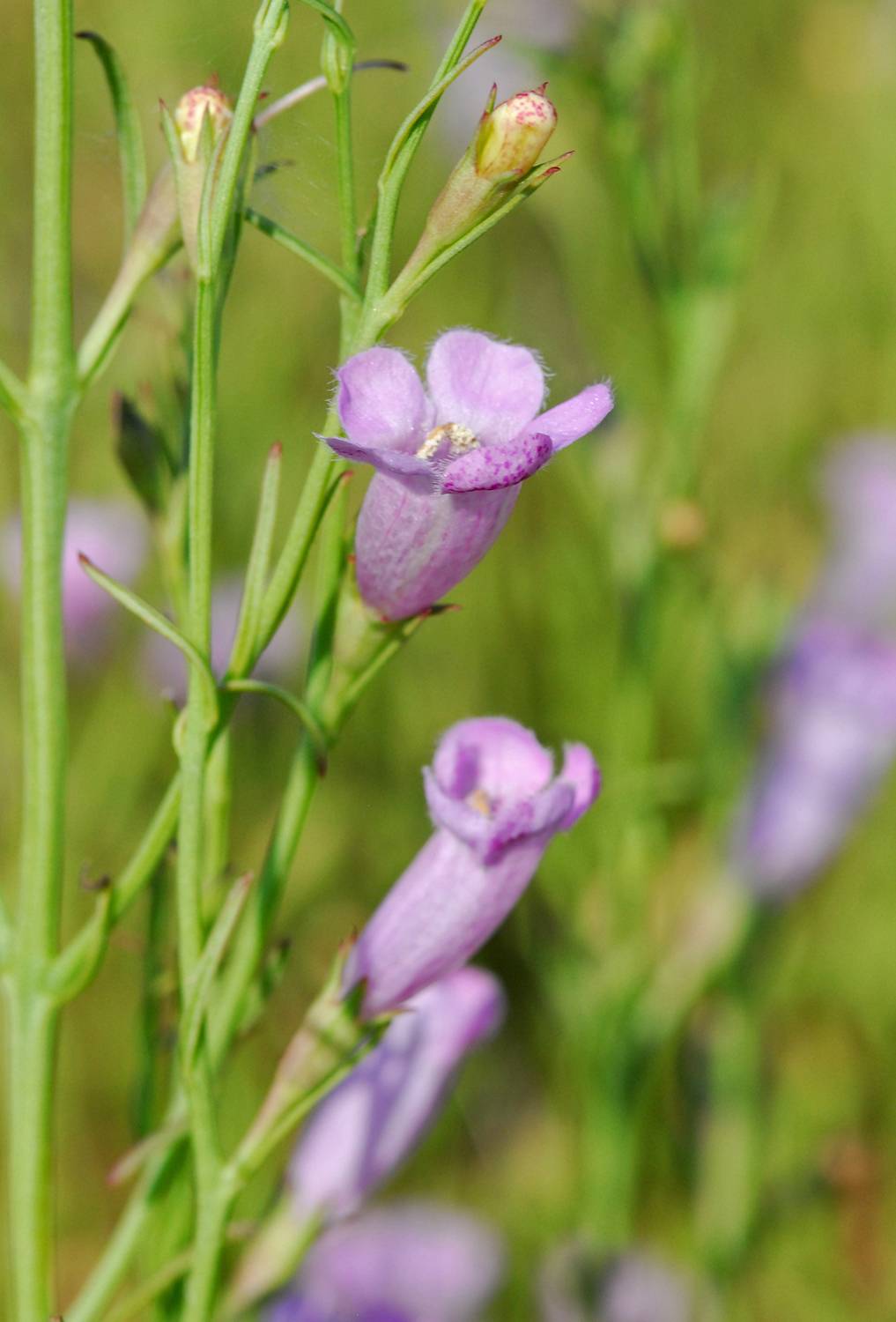Agalinis
|
Family: Orobanchaceae |
Cal regular, the hemispheric or campanulate tube usually longer than the lobes; cor slightly irregular, the campanulate tube often bulged beneath, the 5 lobes all equally distinct; stamens 4, the lower pair the longer; filaments hairy at least toward the base; pollen-sacs villous, dithecal, obtuse to cuspidate at base; stigma 1, flattened and ±elongate; fr globose to subglobose (except in A. aspera), loculicidal; small hemiparasitic herbs with opposite lvs, tending to become alternate on the branches; fls pink to purple (white), in most spp. marked with 2 yellow lines and some darker purple spots in the throat, medium- sized to large, axillary to the ±reduced upper lvs, forming a raceme (or spike), or by reduction terminal. Except for A. auriculata, our spp. all slender, erect, branching, with linear, entire, 1- nerved lvs rarely over 5 cm and almost always scabrous or scaberulous on the upper side, the fls produced in late summer, chiefly Aug. and Sept., each lasting only a day. 60, New World. (Gerardia, misapplied, the name now typified by a member of the Acanthaceae) Gleason, Henry A. & Cronquist, Arthur J. 1991. Manual of vascular plants of northeastern United States and adjacent Canada. lxxv + 910 pp. ©The New York Botanical Garden. All rights reserved. Used by permission. |

